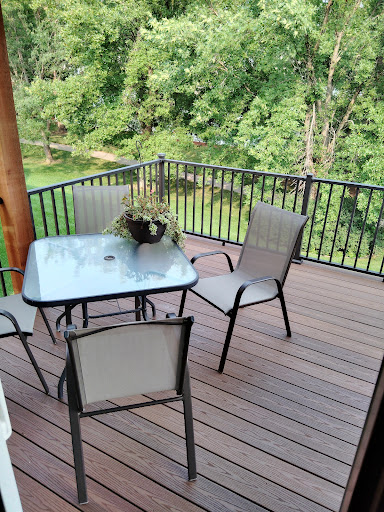Deck Steps (Stairs) Installation: Enhance Accessibility and Safety
Deck steps, also known as deck stairs, provide essential access between different levels of your outdoor space, ensuring safety and convenience. Proper installation of deck steps is crucial for creating a functional and visually appealing transition from your deck to the ground or other areas. Whether you’re adding new steps to a recently built deck or replacing old ones, understanding the installation process can help you achieve a safe and stylish solution.
Benefits of Proper Installation
- Enhanced Safety: Well-constructed deck steps improve safety by providing a stable and secure way to navigate between different levels. Properly designed steps reduce the risk of tripping and falling, especially in high-traffic areas.
- Improved Accessibility: Deck steps make your outdoor space more accessible, allowing easy movement between the deck and the yard or other areas. This is especially important for households with children, elderly family members, or guests with mobility issues.
- Aesthetic Appeal: Carefully designed and installed deck steps can enhance the overall look of your deck. Choosing materials and styles that complement your deck’s design can add visual interest and create a cohesive outdoor environment.
- Increased Property Value: Quality deck steps contribute to the functionality and appearance of your outdoor space, potentially increasing your property’s value. Prospective buyers often appreciate well-designed and safely installed steps.

Types of Deck Steps
- Open Steps: Open or “open-riser” steps have spaces between each step, which can create a modern, airy look. This design allows water and debris to fall through, reducing maintenance.
- Closed Steps: Closed steps feature solid risers, providing a more traditional appearance and offering extra support. They are often chosen for their sturdiness and ability to keep debris from accumulating under the steps.
- Winder Steps: Winder steps are curved or angled steps that turn a corner, allowing for a more compact design. They are useful in situations where space is limited or when a unique design is desired.
- Straight Steps: Straight steps are the simplest and most common design, running directly from the deck to the ground in a single, straight line. They are straightforward to build and provide a clean, classic look.
The Process
- Planning and Design: Start by planning the design and layout of your deck steps. Determine the number of steps needed, their width, and the overall height they need to cover. Ensure the design complies with local building codes and regulations.
- Foundation Preparation: Prepare the foundation for your deck steps. This may involve setting footings or posts to support the step structure. Proper foundation preparation is crucial for stability and longevity.
- Building the Framework: Construct the framework for the steps, including the stringers (the supports that hold the steps) and the treads (the horizontal part of each step). Ensure that the framework is level and securely attached to the deck.
- Installing Treads and Risers: Install the treads and risers onto the framework. Treads are the parts you step on, while risers are the vertical components between each step. Secure them properly to ensure stability and safety.
- Finishing Touches: Add any finishing touches, such as handrails, trim, or non-slip coatings. These elements enhance the safety, functionality, and appearance of your deck steps.
Create Safe and Stylish Deck Steps
Proper installation of deck steps is essential for both safety and aesthetics. By following the right process and choosing quality materials, you can create a functional and attractive transition between your deck and outdoor space. Whether you’re upgrading existing steps or adding new ones, investing in proper installation will enhance your outdoor living experience.
 free estimates: (402) 690-1050
free estimates: (402) 690-1050
































